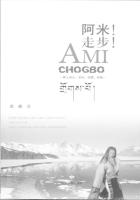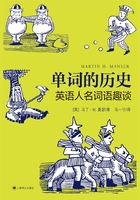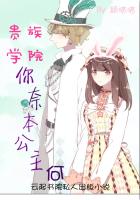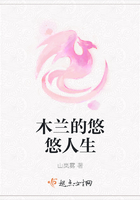Sotirio Bulgari, founder of the firm, was a skilled Greek silversmith originally from Epirus, region in the north west of Greece. After his arrival in Rome in 1881, he opened a number of silver and antique shops in just a few years. Only after 1910 did he begin, with his sons Giorgio and Costantino, to devote himself to jewels with precious stones, proving to be a successful jeweler whose production, however, would be influenced for many years by the Parisian style. His sons took over the management of the firm in 1932.
The silver artefacts created by Sotirio or by his father Georgis during the last quarter of the 19th century were in “Neo-Hellenic” style in their shapes and materials. Some of the older objects were produced in Epirus.
The jewels of the early 20s, inspired by the Art Deco style whose geometric design or stylized naturalistic motifs they adopted, are characterized by platinum mounts, a material that had only recently come into use in jewellery. There are no known examples of the previous production inasmuch as it was not customary to sign creations at that time and the lack of written documentation and of an original style makes any attribution difficult.
The jewels of the 30s are distinctive for their more imposing dimensions and marked geometric motifs in diamonds of different cuts or diamonds combined with a colored gemstone, such as a sapphire or ruby. Also fashionable during these years was the convertible jewel: necklaces may be divided, ****** it possible to wear the different elements separately as bracelets, clips, or brooches.
During the 40s, a radical change took place in the creation of jewellery: no longer in platinum encrusted with diamonds, but in gold with a parsimonious use of precious gemstones. These factors were determined above all by the restrictions caused by the Second World War. The rigid geometric design became softer and more naturalistic.
The post-war economic boom led to a return to jewels mounted in precious white metal and profusely covered with precious gemstones, in particular diamonds which, as in the 30s, reigned supreme as the most fashionable stones. High jewellery was still of a Parisian stamp, but with more sinuous motifs and softer lines than those of the pre-war period. The fifties, the years of Cinectta, Roman Holiday and La Dolce vita, of illustrated magazines, television and paparazzi, were also years in which the Via Condotti 10 shop enjoyed great success, as can be seen from the numerous photographs of celebrities going into or coming out of Bvlgari. Famous stars like Gina Lollobrigida, Sophia Loren or Ingrid Bergman appeared at many public events sparkling with their Bvlgari jewels. At the end of the 50s, Bvlgaris preference for smooth outlines rather than the spiky ones that were fashionable in that period became clear, as well as its more insistent use of important cabochon cut gemstones (polished but not facetted), both distinguishing features of the nascent Bvlgari Style.
At the end of 50s, Bulgari design began to differentiate from that of Paris, as it created its own distinctive style. There was a departure not only from flowery asymmetrical motifs towards more structured, symmetrical and compact shapes that were almost always in yellow gold, but also from the conventional triad of colors composed of emeralds, rubies and sapphires that were combined exclusively with diamonds. In the following decades, Bvlgari developed a highly personal aesthetic of color as it opened up to unusual new combinations. At first, these were “******” using sapphires in particular, but it later became much bolder as all kinds of gemstones came to be employed.
The third Bulgari generation took over the running of the firm in the 70s and the young input was soon evident in the creative exuberance of that period. Those were years of experimentation, provocation and hope, and in some way this is to be found in the great variety of motifs in the Bvlgari designs. These range from the elegant ones inspired by fireworks to those of oriental inspiration or even of optical or pop art, then arrive at the Stars and Stripes jewels. One already notes a predilection for yellow gold in the creations of these years independently of the value of the gemstones employed. In so doing, Bvlgari allowed every jewel, even the richest, to be born in a more informal manner; traditionally, yellow gold was destined for daytime jewels while platinum and white gold were meant for the more important jewels of the evening. During the 70s, shops were opened in New York, Geneva, Montecarlo and Paris.
In serial production, an aspiration of the goldsmiths of antiquity as different objects of the Hellenistic age demonstrate, Bvlgari achieved extraordinary success with Parentesi (1982). During the 80s, the first modular line of high jewellery became an icon whose design continued to be amongst those that were most imitated.
“You cant simply live on past glories: thats foolish. To be a success, you have to combine the worlds of the past, present and the future. That is the challenge, and there are many horizons.” Nicola Bulgari stated in 1995.
customary [‘kst,mri] adj. 习惯的;通常的
paparazzi [,pɑ:prɑ:tsi:] n. 狗仔队
sapphire [‘sfai] n. 蓝宝石
gemstone [‘demstn] n. (经雕琢的)宝石
platinum [‘pltinm] n. 铂金
宝格丽创立于 1884 年,总部设在意大利首都罗马。100 多年来,它创造了无数名闻遐迩的顶级珠宝。时至今日已成为全球知名的奢侈品品牌。产品与服务包括珠宝、腕表、配饰、香水、护肤品、酒店和度假村,品牌以卓越的品质、新颖的造型和优质的服务着称。
宝格丽公司创始人索蒂里欧·宝格丽出生于希腊西北部伊庇鲁斯地区的一个银匠世家。1881年,索蒂里欧移居意大利罗马。几年的时间内,他开创了许多银器和古董店。直到1910年后,他才开始和两个儿子柯斯坦提诺与乔吉奥共同制作镶嵌珍贵宝石的珠宝首饰,并且在很长时间内深受法国学院派风格影响。1932年,他的儿子完全接管了家族事业。
19世纪晚期,索蒂里欧或其父亲乔吉斯制作的银质工艺品无论在外形上,还是在材质上,都带有明显的新希腊风格。一些早期的工艺品是在伊庇鲁斯制作的。
20世纪20年代早期,装饰艺术盛行,几何设计或别具一格的自然图案备受推崇。受此影响,珠宝制作开始采用当时刚刚兴起的铂金材质。没有此类珍贵作品的实例,因为当时还未盛行在珠宝上留下印记由于没有书面记载或原物,因此无从探究先前的制作经历。
20世纪30年代,珠宝首饰的尺寸和选材都有了更高的要求。以色彩为设计精髓,独创性地运用多种不同颜色的宝石进行搭配组合,如蓝宝石或红宝石。当时比较时尚的是可拆分珠宝,比如项链可以拆分成单独的手镯、夹子或胸针。














